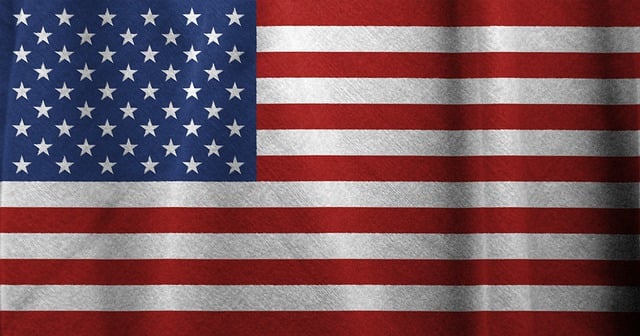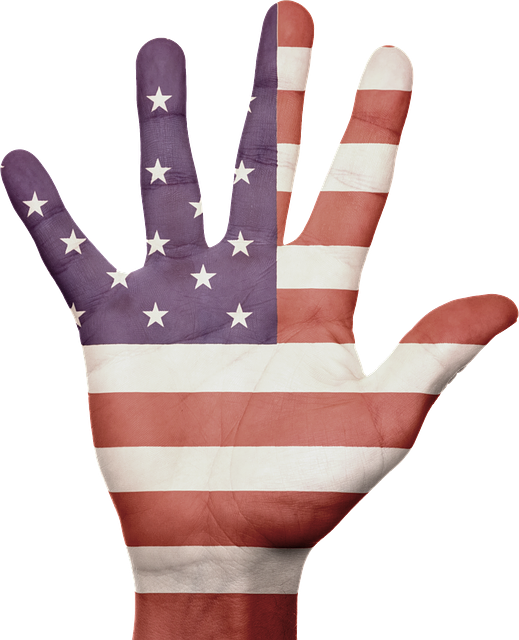The "We the People" American Flag embodies America's democratic values, promoting active civic participation and unity among citizens. Evolving from British influences, the flag's design reflects the nation's growth, with each star and stripe representing states and the country's continuous development. The opening phrase of the U.S. Constitution, "We the People," emphasizes the people's role in governance, serving as a powerful symbol of democracy and national identity. While its incorporation divides opinions, the current flag remains a unifying testament to America's democratic principles.
Discover the powerful symbol of ‘We the People’ on the American flag, a direct reference to the nation’s founding document, the Constitution. This article delves into the historical context and symbolism behind this iconic phrase, exploring its evolution from a revolutionary idea to a cherished national emblem. Through legal insights and public opinion analysis, we uncover why displaying these words on the flag is more than just design; it represents the very essence of American democracy and unity.
- Understanding We the People: The Foundation of American Democracy
- The Evolution of the American Flag: A Historical Perspective
- Incorporating Constitutional Language: Design and Symbolism
- Legal and Cultural Significance: Why This Phrase on the Flag?
- Exploring Public Opinion: Support and Controversy Behind the Idea
Understanding We the People: The Foundation of American Democracy

The phrase “We the People” serves as a powerful foundation for the We the People American Flag, symbolizing the essence of American democracy. It represents the collective strength and unity of every individual within our nation, reminding us all of our shared responsibility in shaping the country’s future. This opening line from the U.S. Constitution is not merely words on paper; it embodies the core values of liberty, equality, and justice that have guided the United States since its inception.
By featuring “We the People” on a flag, this design aims to foster a deeper understanding of democratic principles. It encourages citizens to recognize their civic duty and participate actively in the nation’s governance. This notion of direct participation, where every voice matters, is what makes America unique—a country founded by and for its people, ensuring that democracy remains vibrant and responsive to the needs of its diverse population.
The Evolution of the American Flag: A Historical Perspective

The American flag, an iconic symbol of the nation’s identity, has undergone a remarkable evolution since its inception. Its design, reflecting the values and principles of the United States, has been shaped by historical events and cultural shifts. The incorporation of “We the People” — the opening phrase of the U.S. Constitution — onto the flag represents a significant milestone in this evolution.
Initially, the flags of the American colonies were largely influenced by British traditions, featuring symbols like the Union Jack. However, as the revolutionary spirit grew stronger, so did the desire for a flag that embodied the ideals of independence and self-governance. The “Betsy Ross” flag, said to be one of the earliest versions, featured 13 stripes and 13 stars, each representing a state in the Union. Over time, as new states joined the federation, the flag was modified to include more stars, with the arrangement reflecting the number of states. This dynamic nature of the American flag has ensured that it remains a vibrant testament to the nation’s continuous growth and development, encapsulating the spirit of “We the People.”
Incorporating Constitutional Language: Design and Symbolism

Incorporating the opening phrase of the U.S. Constitution, “We the People,” into a flag design is a powerful symbol of American democracy and unity. This concept has gained traction in recent years as a way to represent the foundational principles of the nation on a visual canvas. The We the People American Flag serves as a reminder of the collective power of citizens and the democratic process that shapes the country.
Design-wise, integrating this textual element requires careful consideration. Artists often opt for elegant typography, ensuring the words are legible yet subtle enough not to overpower the flag’s overall aesthetic. Symbolism plays a crucial role; the red, white, and blue colors traditionally associated with American flags can convey patriotism and freedom. The arrangement of the text might follow a flowing design, mirroring the natural flow of democracy itself, or it could be centered, emphasizing the centrality of the people in governance.
Legal and Cultural Significance: Why This Phrase on the Flag?

The inclusion of the Constitution’s opening phrase, “We the People,” on the American flag is a powerful symbol of the nation’s foundation and the principles upon which it was built. This iconic phrase serves as a legal and cultural reminder of the democratic ideals that unite the people of the United States. It emphasizes the sovereignty of the citizens and their collective role in governing the country, reflecting the core values of freedom, equality, and self-determination.
On a deeper level, showcasing “We the People” on the flag underscores the constitutional basis of American society. It signifies the people’s consent to the government and their inherent rights as individuals. This phrase is not merely decorative; it carries legal weight, reminding both citizens and leaders of the fundamental law that governs the nation. As a result, the flag becomes a visual declaration of the nation’s commitment to its democratic principles and the ongoing struggle to uphold the rights of We the People.
Exploring Public Opinion: Support and Controversy Behind the Idea

The concept of incorporating the Constitution’s opening phrase, “We the People,” onto an American flag has sparked both support and controversy among citizens. Public opinion is a crucial aspect to consider when evaluating this idea. Many patriots and history enthusiasts advocate for such a design change, arguing that it symbolizes the democratic principles upon which the nation was founded. They believe that featuring “We the People” on the flag would serve as a powerful reminder of the rights and responsibilities inherent in American citizenship. This phrase represents the collective strength of the populace and their role in shaping the country’s future.
However, others have expressed skepticism and concern. Critics argue that altering the iconic design of the flag carries political implications and may divide citizens further. They worry that such a change could be seen as an attempt to shift the focus away from existing symbols of unity and freedom. The current American flag, with its stars and stripes, has been a unifying symbol for generations, and any deviation might invite unnecessary controversy. Nonetheless, the debate rages on, reflecting the diverse perspectives within American society regarding national identity and symbolism.
